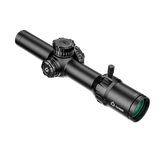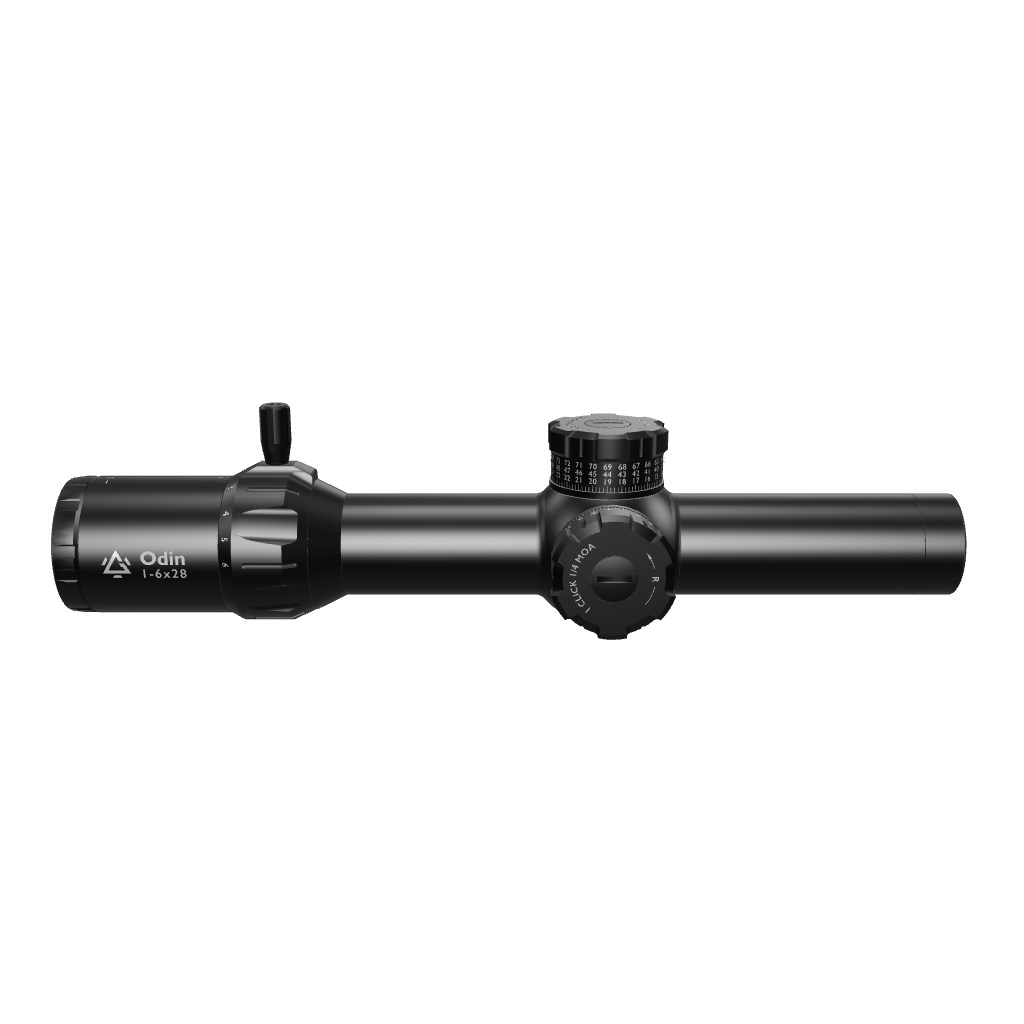COMBINING YOUR RED DOT WITH A VARIABLE OPTIC. WHY IT WORKS?
To be a successful shooter, you have to master the art of being accurate and precise in various situations. Whether you are involved in hunting, competitive shooting, or tactical operations, you are bound to come across several instances where you will need the ability to engage different targets over different distances. Combining your red dot sight with a magnified optic is one of the most effective ways to enhance your shooting capability in these scenarios. Let’s discuss why this combination is a game-changer and how it can elevate your shooting experience.
UNDERSTANDING THE BASICS: WHY DOES IT WORK?
Before discussing the benefits of combining a red dot with an optic, let's understand each component and what it brings to the table. This will go a long way in explaining why this combination works.
UNDERSTANDING RED DOT SIGHTS
The key advantage of a red dot sight is that it is designed to help you easily achieve accuracy when you aim. Because the red dot appears in the same plane as the target, there’s no need for you to worry about aligning the sight with the target as you would if you were using a traditional iron sight. The red dot light does wonders for your accuracy, especially if you are shooting over a short range.
WHAT MAKES RED A DOT SO DESIRABLE?
Instant Aiming. The red dot is specially designed to give you excellent aiming in close to mid-range shooting (usually up to about 100-200 yards). Within this range, all you need to do is place the dot on your target, and accuracy is guaranteed.
There’s no need for precise eye alignment with the sight because the dot always indicates where the shot will go (we’re assuming the sight is zeroed correctly).
It Gives You Speed: In situations like hunting or tactical operations, the target (be it a game or an enemy) can appear and disappear in seconds. Every second counts, and having a red dot enables you to take aim, place, and take the shot quickly.
It is Really Excellent in Short-Range Situations. With a red dot, you have a wide field of view and can maintain situational awareness; you see your target clearly, and you can hit it with precision. The process is just a lot easier than with different options, and for this reason, red dots are considered a good tool for training new shooters.
MAIN DISADVANTAGE OF RED DOTS
There is no magnification with red dot sights. In other words, if you are engaged in any shooting activity where you are required to make accurate shots over a long-range, a red dot really cannot help you much. Beyond 200 yards, it becomes increasingly difficult for you to identify the target and shoot with any degree of precision. Sometimes, the dot itself kind of gets in your way as it becomes too large for you to see your target through the sight.
UNDERSTANDING MAGNIFIED OPTICS
Magnified optics are commonly known as scopes, and where the red dot ends is where a scope starts. With a scope, you have access to magnification, which, like a “zoom-in” function, allows you to adjust the settings on the scope to see and engage targets at long distances with greater precision.
MAIN ADVANTAGE
The main advantage of a magnified optic is that it allows you to be accurate over a long range. Many shooters find that 10x magnification is enough for targets up to 500-800 yards away. They come with sophisticated reticles that provide additional information, such as bullet drop compensation, windage and range estimation which make it possible for you to achieve accuracy even over longer distances.
Being able to shoot over the long-range is incredibly useful, especially for snipers, competitive shooters, and hunters.
MAIN WEAKNESS
In close quarters, you probably don’t want to be using a conventional magnification scope. Without the red dot, it takes too much time to align and acquire the target.
Using a magnified optic alone can be really ineffective, especially in situations like hunting or tactical engagements where the target is likely to be moving over varying distances or rapidly changing positions.
COMBINING THE TWO: A FORMULA THAT WINS
By aligning the two, you make them complement each other. The red dot gives you accuracy in close to mid-range shooting scenarios, and the scope gives you accuracy in engaging long-range targets. Think about what it means for you to be able to shoot accurately from anywhere between 100 yards to 800 yards and still maintain a decent level of accuracy. With such versatility and flexibility, your possibilities as a shooter are endless.
Close-Range and Long-Range Engagements: In scenarios such as hunting or tactical operations, targets can appear at any range. With your combination, you can quickly switch from using the red dot for close-range engagements to the magnified optic for long-range precision. You have the best chance of hitting that target no matter how close it comes or how far it goes.
Dual-Use Scenarios: There are some scenarios where you need to use one without sacrificing the strength of the other. For example, in a tactical scenario, you might need to quickly engage an enemy that suddenly appears at close range while still having the capability to accurately take down a distant target.
In this case, you can use the red dot for rapid response while the optic provides the precision needed for the longer shots. This combination is perfect because you don’t have to sacrifice speed for accuracy.
You Have Backup: An Added Layer of Reliability
There are many factors that could cause an optic to fail unexpectedly. It could be battery loss, mechanical failure or even physical damage. With this combination, the red dot can serve as a reliable backup. In situations where failure is not an option, having this combination can be a lifesaver.
Different Roles for Different Distances: Even in situations where both sights are functioning perfectly, they can serve different roles. The red dot can be your go-to for quick shots and moving targets, while the magnified optic can be reserved for precision shots at longer ranges.
ANY SETBACKS TO THIS SYSTEM?
True, this system provides versatility and accuracy in a variety of situations, but it does have its own setbacks. The most bvious one would be the cost. Neither red dot sights nor magnified scopes are particularly cheap. With red dots going anywhere between $200-$1000, and scopes costing significantly more, you could end up spending a fortune on this setup. If you are like the average shooter, this would be way above budget.
Using the two together can significantly increase the weight of your setup. Added weight affects the balance of your rifle and can make it more difficult to use, especially if you use it for extended periods.
Also, you might have to spend a lot of time learning how to use the two together and becoming familiar with the setup. You will have to zero the two separately, for example, a process that will take a lot of time and require you to remember the different points of impact for each sight( depending on the range)
If you are less experienced with firearms, or if you tend to get really worked up under stress, switching between the two could be a problem.
There is also the fact that these two can sometimes not be as compatible as they sound. There is a possibility that one sight could obstruct the field of view of the other. For example, a top-mounted red dot might partially block the view through the magnified optic or create a distraction. So you must be an expert to mount this setup.
In some situations, the capabilities of the red dot and the magnified optic might overlap, making one piece of equipment redundant. If the majority of your shooting is done at a specific range where one sight is sufficient, the added complexity of using both may not really be worth it.
IS AN LPVO A BETTER SOLUTION?
If you really like the idea of combining these two pieces of gear but are deterred by the additional cost or the complexities of using the setup, then you might want to consider an LPVO. Simply put, an LPVO gives you the same combination but with much less complexity and a significantly reduced weight. To understand what an LVO offers, check out this newly launched model from Gunnr called the ODIN.
GUNNRS ODIN: ALL THE VERSATILITY, NONE OF THE COMPLEXITY
Gunnr’s Odin LPVO Scopes are the newly released line of scopes from GUNNR, a company that is quickly gaining ground with its high-quality optics that offer you the perfect blend of innovation and reliability at a price that won't break the bank.
With Odin scopes, you experience the superior clarity of German Schott ED Glass, ensuring exceptional edge-to-edge sharpness for every shot.
The first focal plane (FFP) reticle provides fast, accurate distance estimation at any magnification, adapting seamlessly to changing light conditions with six brightness settings. These optics are Constructed from durable 7075 aluminum alloy; this scope is IP67-rated for dust and waterproof performance, guaranteeing dependability in any environment. With the Gunnr Odin, you're equipped with a versatile tool designed to enhance your shooting experience and leave you wondering how you ever aimed without it.







